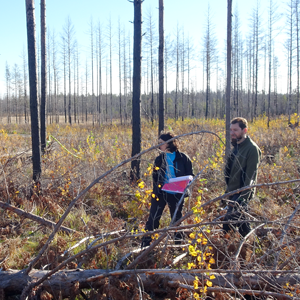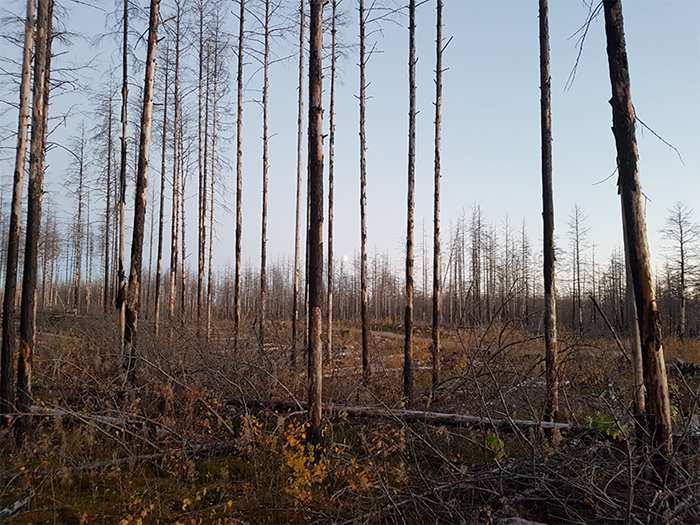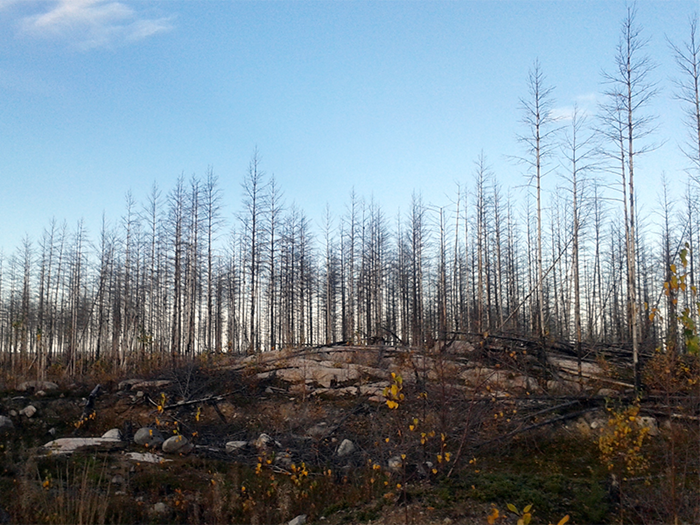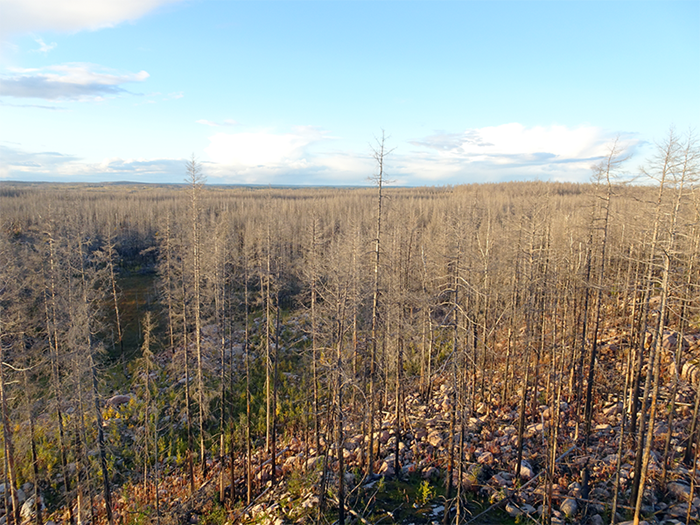What happens to fungi and ecosystem processes if forest fires become more severe?

With global warming, there is a larger risk of fire. How will that affect ecologically important fungi in the soil? SLU researchers investigated the 2014 wildfire areas in Västmanland to find out. Crown fires, in which all trees were killed, affect soil fungi to a larger extent than ground fires with surviving trees and high loss of humus. The survival of Scots pines after fire seems to play a key role in maintaining fungal diversity and functionality.
More than half of the total land area in Sweden is covered by forest. Forestry is very important for the economy of the country. Moreover, in current times when we are facing global warming, one of the main roles of forests worldwide is to mitigate CO2 emissions by stocking carbon.
Forest habitats are sensitive to environmental changes
Unfortunately, forest habitats are also sensitive to environmental changes caused by global warming. One of the main threats to these ecosystems is the increase in the incidence and magnitude of fires that comes with the predicted increase in temperature and drier summers.
Fire has the potential to deplete carbon storages and push ecosystems in unknown directions. In fact, during the last years Sweden has experienced the most serious wildfires in modern history.
The summer of 2018 that was especially warm and dry provoked a high number of forest fires (~4000) throughout the country. In 2014 there was an unusually severe wildfire in Västmanland, in which around 15 000 hectares were burnt. Although fire is considered a threat for forests, it is also an essential disturbance that historically has shaped the dynamics and structure of the Scandinavian boreal forests.
Forests adapted to endure low intensity fires
These forests have adapted to endure low intensity ground fires, where large trees – pines in particular – usually survive and a significant portion of the organic layer is left intact below the uppermost charcoal layer. However, what happens if fire intensity and severity change, as it seems to happen with the new climatic scenarios? What are the ecological consequences of the change of fire type from ground to crown fire, in which trees burn up their entire length to the top?
Taking the advantage of the aforementioned Sala fire, which created a mosaic of different fire types and severities, a large collaborative venture was established to investigate ecosystem recovery after different fire scenarios.
Soil fungi are fundamental ecosystem components, because they are the main drivers of organic matter dynamics and nutrient recycling in coniferous forest ecosystems and main players in forest regeneration, as mycorrhizal symbionts to tree roots. Thus, we aimed to characterize different ground- fire and crown-fire severities and assess their impacts on below-ground fungal communities and their function in organic matter turn-over.
Crown-fires can affect important fungi negatively
The fire profoundly affected the edaphic environment, aboveground vegetation and soil fungal communities. We found that crown fires, in which all trees were killed, affect soil fungi to a larger extent than ground fires with surviving trees. The survival of Scots pines after fire seems to play a key role in maintaining fungal diversity and functionality.
Thus, we identified a risk that crown-fires, predicted to increase in occurrence, may have a detrimental effect on fungal-mediated functions that are central for maintaining ecosystem fertility. Functional changes in fungal communities associated with crown fire may interfere with the sensitive mycorrhizal interplay between fungi and trees that is pivotal in maintaining organic matter turn-over, soil fertility and forest recovery.


